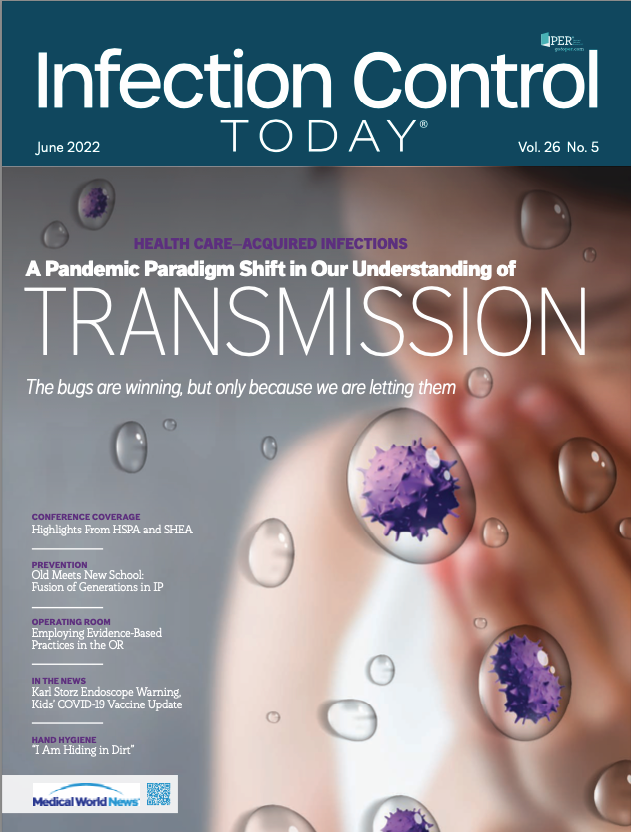In-Use Disinfectant Bucket Identified as Source of Contamination in Hospital
The contamination was found during another study that involved culturing surfaces before and after routine daily cleaning/disinfection.
(Adobe Stock)

Failure to adhere to recommended disinfection protocols and manufacturer’s instructions for use of a hospital-grade disinfectant led to the contamination of high-touch surfaces according to a recent study published in American Journal of Infection Control (AJIC) by John M. Boyce, MD, and Nancy L. Havill, MT, MHA.
Since high-touch surfaces, including handrails and equipment controls, are among the most contaminated in long-term care facilities, these surfaces must be cleaned regularly and by cleaning manufacturer’s guidelines to avoid spreading pathogens responsible for health care-associated (HAI) infections.
During another study that involved culturing high-touch surfaces before and after routine daily cleaning/disinfection, Boyce, in an exclusive interview with Infection Control Today®, said the investigators “found large numbers of Gram-negative bacteria not present on surfaces before cleaning were found on surfaces minutes after surfaces had been disinfected with a hospital-grade quaternary ammonium-based disinfectant.” Contamination was due to failure of a housekeeper to follow recommended disinfection protocols including emptying and drying the bucket between uses.
Although quaternary ammonium (Quat) compounds are widely used as disinfectants, are safe, and are considered to be good cleaning agents, they may become contaminated with HAI pathogens. In this study, “If contamination of the disinfectant had not been identified, continued contamination of high-touch surfaces might have resulted in contamination of the hands of healthcare personnel or acquisition of the pathogens by patients,” said Boyce in the written interview with ICT®.
The housekeeper, who rarely cleaned patient rooms, used the bucket of disinfectant that contained 9.3 x 104 CFU of Gram-negative rods, mostly Serratia marcescens, with smaller numbers of Achromobacter xylosoxidans, an investigation revealed. However, the investigation found that the contaminated disinfectant still had substantial antimicrobial effectiveness, as demonstrated by its ability to prevent growth of a control strain of S. marcescens and of Staphylcococcus aureus. Whole genome sequencing of S. marcescens revealed that isolates contained sdeXY, sdeAB, smfY and a sugE-like genes. In earlier studies, these genes have been identified as being responsible for decreased susceptibility of quaternary ammonium compounds due to efflux pump mechanisms.
“As a result of the investigation, the responsible housekeeper received re-education of the need to follow manufacturer’s recommended instructions for use, and the need for buckets to be cleaned at appropriate intervals and allowed to dry before new disinfectant is added,” Boyce told ICT®. Notably, Boyce mentioned that the investigators “were surprised by the number of Gram-negative bacteria that remained viable in the contaminated disinfectant; although, a few previous studies have identified similar levels of contamination.”
The investigators believe this is the first example of identifying the efflux pumps most likely related to the quaternary ammonium resistance of Serratia recovered from an in-use quaternary ammonium disinfectant. Therefore, Boyce noted, “additional studies of microorganisms recovered from in-use contaminated disinfectants are needed to further identify mechanisms of resistance that permit pathogens to survive in in-use concentrations of Quat disinfectants.”
HAIs by contamination or improper sterilization also occurred recently at a Georgia Veterans Affairs hospital also where thousands of patients were potentially exposed to HIV and hepatitis.
The use of over-diluted solutions, use of contaminated water to dilute concentrated solutions, and use of outdated products are other common errors responsible for contamination of antiseptics and disinfectants.
